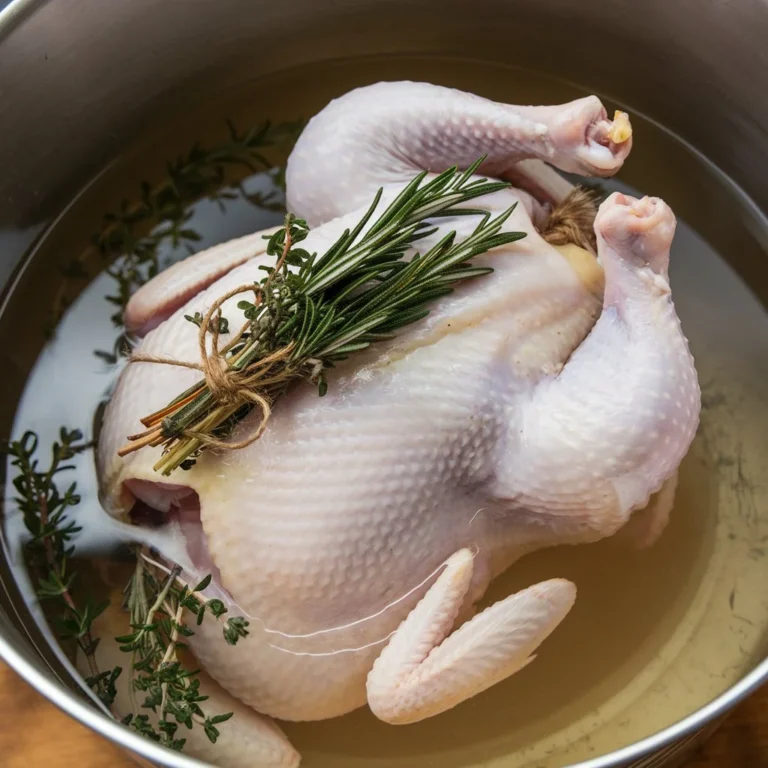Can I Use Instant Potato Flakes to Thicken Potato Soup? A Complete Guide
Potato soup is the ultimate comfort food, often enjoyed for its rich, creamy consistency. Whether it’s the cold winter months that call for a warm bowl of hearty potato soup or simply a craving for a delicious homemade dish, achieving the perfect thickness is always the key to the best potato soup. One method that is gaining popularity is using instant potato flakes. In this comprehensive guide, we will explore if and how you can use instant potato flakes to thicken potato soup, compare them with other thickeners, and answer the most common questions about their use.
Whether you’re new to cooking or a seasoned chef looking for efficient solutions, this article will help you understand the benefits of instant potato flakes, learn step-by-step thickening techniques, troubleshoot common issues, and much more. Plus, we’ll link to related resources that might come in handy while making the perfect potato soup.
Understanding Potato Soup and Thickening Methods
Many home cooks use instant potato flakes as a convenient thickening agent.However, many cooks find it challenging to achieve the consistency that turns a simple soup into something truly luxurious. To achieve that creamy consistency, a thickening agent is often used. Let’s explore some of the most common methods and see how instant potato flakes fit into the picture.
Traditional Thickening Agents for Potato Soup
Traditionally, potato soup is thickened in several ways:
- Roux: A roux is a mixture of equal parts flour and fat (like butter). It is cooked until thick and added to the soup to achieve a rich, thick consistency.
- Cornstarch Slurry: Cornstarch mixed with cold water is another common thickener. It adds thickness without a floury flavor.
- Blended Potatoes: Some people blend a portion of the cooked potatoes into a puree and add it back into the soup. This is a natural and gluten-free way to thicken the soup while keeping it all-potato.
- Cream: Adding cream at the end creates a rich, luxurious texture. This method isn’t ideal for those who are trying to cut calories, but it certainly adds indulgence.
- Instant Potato Flakes: A less common, but incredibly effective way is to use instant potato flakes. These flakes not only thicken but also complement the existing flavor.
For a similar comforting experience, you may want to try the recipe for chicken potato soup, which can be made extra creamy by adding a few simple thickening ingredients.
What Are Instant Potato Flakes?
Manufacturers create instant potato flakes by boiling, mashing, and then drying potatoes.. These flakes are lightweight, easy to store, and require minimal preparation. While they are typically used to create mashed potatoes in minutes, they also offer a versatile and effective way to thicken soups, stews, and even sauces.
How Are Instant Potato Flakes Made?
The process of making instant potato flakes involves boiling and mashing potatoes, then spreading them thinly and drying them until they can be crushed into a flake form. The drying process ensures that these flakes can be easily reconstituted with water or broth, making them incredibly versatile.
Nutritional Profile of Instant Potato Flakes
Instant potato flakes are not just about convenience—they also retain a significant portion of the nutrients found in fresh potatoes:
- Calories: Instant potato flakes are calorie-dense, as they are dehydrated.
- Carbohydrates: They are rich in carbohydrates, which makes them a good energy source.
- Fiber: Potato flakes provide dietary fiber, which is beneficial for digestion.
- Minerals: They contain potassium, iron, and magnesium, making them a valuable addition nutritionally.
If you’re looking to explore other nutritious recipes, consider adding vegetables like zucchini, as in this zucchini mushroom recipe, which is both flavorful and healthy.
Benefits of Using Instant Potato Flakes to Thicken Soup
The benefits of using instant potato flakes are numerous. Here’s a breakdown of why you might want to consider using this ingredient:
- Convenience: They are easy to store, have a long shelf-life, and do not require any special preparation. Unlike flour or cornstarch, you don’t need to make a slurry or worry about cooking out a raw taste.
- Versatility: Potato flakes not only work as a thickener but also enhance the overall potato flavor of the soup. This is a great way to ensure the soup stays true to its roots while improving texture.
- Gluten-Free Option: For those avoiding gluten, instant potato flakes provide a safe and natural way to thicken soups without compromising flavor.
- Nutritional Benefits: Unlike some thickening agents that are mostly empty calories, potato flakes contain fiber and essential nutrients.
- Adds Richness: Potato flakes add a creaminess and rich consistency that is difficult to achieve using other methods.
How to Use Instant Potato Flakes to Thicken Soup
The process of using instant potato flakes to thicken soup is straightforward but requires some attention to detail to ensure you don’t end up with a gluey consistency.
Step-by-Step Guide
- Prepare the Soup Base: Begin by preparing your soup as you normally would—cooking down the potatoes, onions, garlic, and broth.
- Check the Consistency: Before adding any thickener, decide how much thicker you need your soup to be. This will help you determine how many flakes to add.
- Add the Flakes Gradually: Take a small amount of instant potato flakes and sprinkle them into the soup while stirring continuously. This helps prevent clumping.
- Stir Well and Wait: Continue to stir as you add the flakes, allowing time for the flakes to absorb the liquid. You’ll notice that the soup starts to thicken almost immediately.
- Adjust as Needed: If the soup is not thick enough, add more flakes in small increments until you reach the desired consistency.
Tip: Start with about 1-2 tablespoons per cup of soup and add more if needed. It’s always easier to add more than to fix an overly thick soup.
Comparing Instant Potato Flakes with Other Thickeners
To make an informed decision on the best thickener for your potato soup, it’s helpful to compare instant potato flakes to other popular thickening methods.
Instant Potato Flakes vs. Flour or Cornstarch
Potato Flakes:
- Flavor Addition: Adds a potato flavor that blends perfectly with potato soup.
- No Extra Cooking Required: Unlike flour, you don’t need to cook out a raw taste.
Flour/Cornstarch:
- Neutral Taste: Flour and cornstarch won’t alter the flavor of the soup.
- Extra Steps: Requires making a slurry (cornstarch) or a roux (flour) and ensuring it’s cooked thoroughly to avoid a raw taste.
Instant Potato Flakes vs. Blended Potatoes
Potato Flakes:
- Convenient: Requires no additional blending tools or pureeing.
- Easily Adjustable: You can adjust the consistency incrementally.
Blended Potatoes:
- Thicker Texture: Blending potatoes gives a thicker texture but runs the risk of turning gummy.
- Natural Flavor: Blended potatoes maintain the natural flavor and fiber content.
Instant Potato Flakes vs. Cream
Potato Flakes:
- Lower in Calories: Potato flakes are significantly lower in calories compared to cream.
- Thicker Texture Without Dairy: For those who are lactose intolerant or vegan, potato flakes provide a creamy consistency without dairy.
Cream:
- Richness: Cream gives an indulgent, velvety texture.
- Higher Fat Content: Adds a considerable amount of fat to the dish.
Enhancing the Flavor While Thickening
Adding instant potato flakes can sometimes dull the flavors in the soup. Here are some ways to enhance the taste after adding your thickener:
- Fresh Herbs: Add fresh herbs like thyme, rosemary, or parsley right after thickening. Herbs add freshness that complements the creamy consistency.
- Spices: Black pepper, nutmeg, and even a dash of cayenne pepper can elevate the soup’s flavor profile.
- Fat for Richness: A bit of butter or cream added after thickening with flakes can enhance both flavor and mouthfeel without overwhelming the soup.
If you are interested in enhancing a creamy soup like poblano soup, check out the poblano soup recipe for more inspiration on how to add depth of flavor while keeping that creamy consistency.
Nutritional Considerations
Using instant potato flakes adds a different nutritional aspect compared to other thickeners like flour or cornstarch.
- Carbohydrates: Instant potato flakes are high in carbohydrates, making them a good source of energy.
- Fiber: They offer dietary fiber, aiding digestion and providing a sense of fullness.
- Potassium: Potatoes are rich in potassium, an essential mineral for heart and muscle function.
For a nutritious twist, try adding different vegetables like mushrooms and zucchini, which provide fiber and nutrients. See this zucchini mushroom recipe to explore a tasty and healthy combination.
Frequently Asked Questions (FAQs)
Can I Use Instant Potato Flakes in Other Soups?
Yes! Instant potato flakes are not limited to just potato soup—they work well in other thick, creamy soups like vegetable chowder, clam chowder, or cream-based soups. They can also be used in soups like chicken pot pie soup to add texture and enhance the creaminess.
For a delicious alternative, try using thickening techniques with salmon soup, which benefits greatly from the addition of potato flakes to achieve a hearty consistency.
Do Instant Potato Flakes Change the Flavor?
They do add a subtle potato flavor, which works well in potato-based soups. However, in other soups, you may need to adjust seasonings after adding the flakes to ensure the flavors are well-balanced.
How Do I Avoid Lumps When Adding Potato Flakes?
Lumps can be avoided by:
- Adding the flakes slowly while stirring constantly.
- Ensuring that the soup is hot enough to dissolve the flakes evenly.
Are Instant Potato Flakes Gluten-Free?
Yes, instant potato flakes are naturally gluten-free, making them an excellent thickener for those with gluten sensitivities.
Can You Use Instant Potato Flakes in a Vegan Potato Soup?
Absolutely. Instant potato flakes are vegan-friendly, so they can be used to thicken vegan potato soups without any issues. Simply add flakes to a vegetable broth-based potato soup for a thick, satisfying dish.
Are There Any Alternatives to Instant Potato Flakes?
If you don’t have instant potato flakes, you can use:
- Mashed Potatoes: Blend a portion of the potatoes in your soup for natural thickening.
- Arrowroot Powder: A gluten-free thickener similar to cornstarch but adds a glossy finish to soups.
- Coconut Milk or Cream: For a non-traditional thickener that adds a unique flavor, try coconut milk.
Recipe Variations Using Instant Potato Flakes
Besides thickening soups, instant potato flakes can be used in various dishes for a delightful texture and added convenience.
1. Creamy Chicken and Potato Soup with Flakes
Instant potato flakes can be used in a creamy chicken and potato soup to achieve a thick, smooth consistency. Add flakes directly to the broth and allow them to meld with the chicken flavors, creating a hearty, comforting soup.
2. Potato and Leek Soup
Leeks add a slight onion flavor that pairs well with potatoes. Use instant potato flakes in the final stages of cooking to make this classic soup thick and satisfying. Top with a bit of sour cream and fresh chives for added depth.
3. Cheesy Potato Broccoli Soup
Broccoli and cheese are a match made in heaven, but adding instant potato flakes can make the soup extra rich and creamy without needing an excessive amount of cheese or cream. Add flakes gradually until the desired thickness is achieved, and then stir in the cheese.
Troubleshooting Common Issues
Even with instant potato flakes, you might encounter some challenges. Here are common issues and how to solve them:
1. Soup Too Thick
If your soup becomes too thick, add a bit more broth or water. Heat it gently while stirring to ensure the extra liquid incorporates smoothly.
2. Lumps in the Soup
- Solution: If lumps form, use a whisk to break them down.
- Prevention: Add flakes gradually while stirring to prevent clumping.
3. Flavor Became Too Mellow After Thickening
Adding instant potato flakes can absorb some of the soup’s seasoning, resulting in a more mellow flavor. Here’s how to adjust:
- Add More Seasoning: Taste the soup and add salt, pepper, or herbs as needed.
- Fat for Richness: Stir in a little butter or cream to bring back the rich flavors.
4. Gummy Texture
- Cause: Adding too many flakes at once or over-blending the potatoes.
- Solution: Add extra broth and stir gently to reduce the thickness.
Tips for Using Instant Potato Flakes in Other Recipes
Instant potato flakes are versatile and can be used in other recipes beyond soups:
As a Coating for Frying
Potato flakes can be used to coat chicken or fish before frying to give a crunchy, crispy finish. They add more flavor compared to traditional bread crumbs and can be mixed with spices for an extra punch.
In Casseroles
Add potato flakes to casseroles to create a thick base. For example, adding them to a shepherd’s pie ensures that the topping is thick and perfectly smooth without a lot of extra effort.
In Baking
Potato flakes can be added to bread dough for softer, moister bread. Try incorporating them into dinner rolls or loaves for a fluffy texture. They can also be used in savory muffins or even pancakes for a unique twist.
For inspiration, consider trying out this baked chicken cutlet recipe that uses a crisp coating similar to what can be achieved with potato flakes.
The Science Behind Thickening with Potato Flakes
Understanding how instant potato flakes work can help you use them more effectively. The thickening occurs because potato flakes are mostly made of starch. When hydrated, these starches absorb water, swell, and create a gel-like consistency that adds body and volume to the soup.
The Role of Starch
Starch molecules in potatoes consist of amylose and amylopectin. When heated in the presence of water, these molecules unravel and absorb liquid, creating a thick matrix that gives the soup its body. The amount of amylose and amylopectin determines how thick and stable the resulting mixture will be.
Storing and Reheating Potato Soup Thickened with Potato Flakes
Storage Tips
- Store leftover potato soup in an airtight container in the refrigerator for up to 3-4 days.
- Potato flakes tend to continue absorbing liquid, so the soup may thicken more as it sits.
Reheating Instructions
- On the Stove: Place the soup in a pot and add a splash of water or broth to thin it out as it reheats. Heat over medium until it reaches the desired temperature.
- Microwave: Use a microwave-safe container and heat in short intervals, stirring in between, to prevent uneven heating.
Conclusion
Using instant potato flakes as a thickener for potato soup is a practical, flavorful, and easy solution. They not only add body to the soup but also complement the overall taste, making the soup richer without much added effort. Whether you are a home cook looking for a quick fix or someone trying to perfect a comforting winter dish, instant potato flakes offer versatility and convenience.
From understanding how to use them effectively to comparing them with other thickening agents, you now have all the tools you need to make a perfect bowl of potato soup. Remember, the key is to add the flakes slowly while stirring, taste for seasoning, and enjoy the added creaminess. With these tips, you’re sure to impress your family and friends with your delicious, thickened soups.
For more comforting soup recipes and cooking inspiration, consider exploring this salmon soup recipe, which is full of flavor and perfect for those cold winter evenings.







